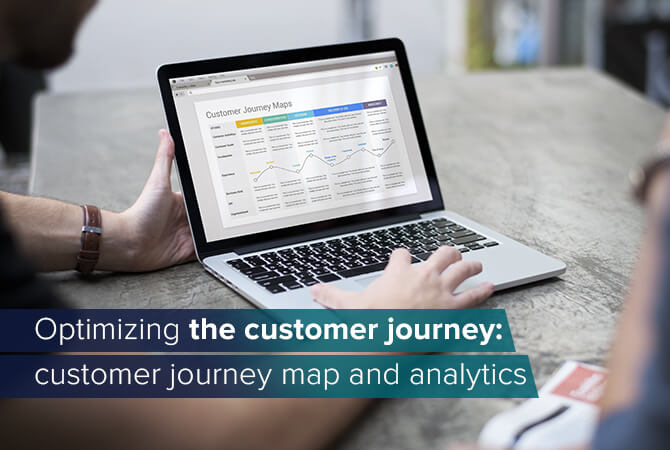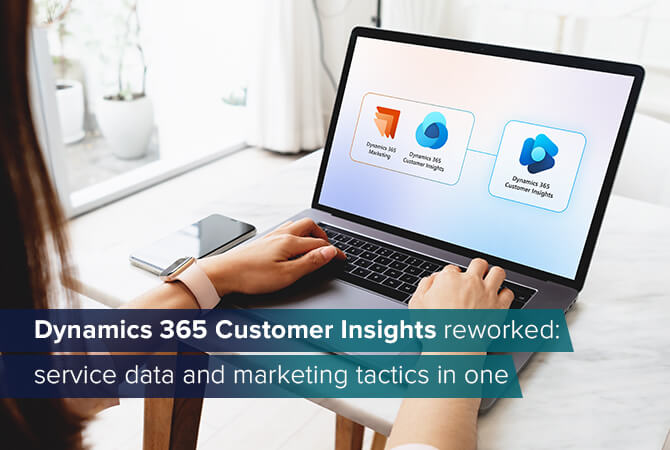
Optimizing the customer journey: customer journey map and analytics
You are probably familiar with the route customers take from their first contact with your company to the actual purchase of a product or service – kind of anyway. And you certainly also know which points of contact with your organization arise in the process – again, kind of.
Buyers today are spoiled for choice: useful information about the product or service, consistent interactions and personal relationships are important if you want to stand out from the competition with an excellent customer experience – before and after the purchase.
Especially if your interactions with customers are not as successful as you had hoped, you should take a closer look at your customer journey. Or simply if you haven’t done so for a while.
In our article, we’ll show you how you can improve your customer journey.
The customer journey map
If you already have a customer journey, there is a good chance that you have all the relevant data and information, too. That means you’ll only need to collect and sort it. We say “only” – however, don’t underestimate the amount of time this will take, and plan accordingly.
A customer journey map is worthwhile if you want to better understand user behavior, for example why your website is visited frequently, but you don’t generate any leads – because nobody downloads your whitepaper, or nobody checks out with their virtual shopping cart. Using the customer journey map, you can track all the important interactions between companies and users as they search for a solution to a problem.
There are many ways to create a customer journey map. How deep you want to dive into the details is up to you.
First things first: the persona
The buyer or customer persona is always at the center of the customer journey. They replace the customers that marketing teams in many companies don’t usually meet in person.
In many cases, rough target group descriptions or market segments are not sufficient for a customer journey, and the results are too imprecise. Personas, on the other hand, are presented as characters with personality and are usually prepared visually, e.g. as a profile. They help you to understand aspects such as life circumstances, feelings, motivations, interests or challenges of your customers.
Again, do not underestimate the time required to create these personas. However, as it is one of the most important aspects of strategic marketing, it is worth the investment!
The customer journey map in five steps
1. Define phases
Depending on the company, customers go through different phases while interacting with you, for example via your website or social media. Such phases can be:
- Discover
- Research
- Selection
- Purchase
Depending on whether you work in a B2B or B2C company, these may vary.
2. Assign goals
Think about the goals your customers want to achieve at each stage. You can find these out, for example, by collecting data with the help of
- surveys;
- user testing;
- any information from interviews, emails or phone calls.
In this way, you can determine whether your customers have the opportunity to achieve their goals via your website.
3. Plan touchpoints
At which points on your website do visitors interact with your company, for example via the links in your menu or buttons that lead to a download or contact form?
An analysis tool for your website will help you to identify these touchpoints, such as Google Analytics.
4. Testing
Does your website offer potential customers the opportunity to achieve the goals you defined in step 2? Ask yourself the following questions, among others:
- What hurdles are there?
- Do customers fill out their shopping cart or a form but do not complete the action?
- Do the pages that offer a download, for example, receive visits?
In short: Analyze the actions of your users – or the lack of actions – and think about where you can or must improve.
5. Adapt
You can’t take care of all challenges at once – so prioritize and focus on the pages or touchpoints you want to adjust first.
For example: You find out that your customers are afraid of falling into a subscription trap. But this is not the case. Such a misunderstanding can easily be cleared up by adjusting the texts on your website.
Another possible test method is the classic A/B test: is there a pattern for subject lines that subscribers prefer or buttons that are clicked better or worse depending on their placement?
Tip: Keep a visual record of your customer journey map, for example in a simple table with rows and columns!
Analyzing the customer journey
Whether you are creating a customer journey map or analyzing the actual customer journey, you need data in both cases. It is essential for understanding the behavior of your customers.
This data can be collected and analyzed with the right tools. Ideally, these include solid marketing automation software and an analysis tool. The former includes, for example, Dynamics 365 Customer Insights Data and Journeys (formerly Dynamics 365 Marketing) or other industry giants such as HubSpot.
Whichever tool you ultimately choose, the following features are particularly important:
- The software should help you overcome challenges in managing data and optimizing your marketing.
- Data that is distributed across different systems does not provide coherent analyses – a uniform IT landscape is therefore an advantage.
- You need to be able to maintain an overview of your customer journey, e.g. with the help of an analysis dashboard.
- Ideally, the software can be adapted to your needs, for example in terms of user experience, statistics, etc.
There is no question that a coherent customer journey and analysis are crucial. You should therefore think about which tools you will use to tackle the challenges. If you are familiar with the old, new Dynamics 365 Customer Insights
Conclusion
Understanding the behavior of your customers is the be-all and end-all for a customer journey that is also intended to be successful. This process is by no means always linear. Even if it would be easiest to guide customers cleanly from phase A to phase B, the reality is different.
It is therefore all the more important to understand this behavior and the goals of your customers as well as possible, i.e. how they navigate through your website. A comprehensible, personalized customer journey plays just as important a role as the software that can help you implement it!
Do you have questions about Dynamics 365 Customer Insights – Journeys (formerly: Dynamics 365 Marketing) or another Dynamics 365 module? Then get in touch with us – you can reach the experts at proMX via our contact form!




